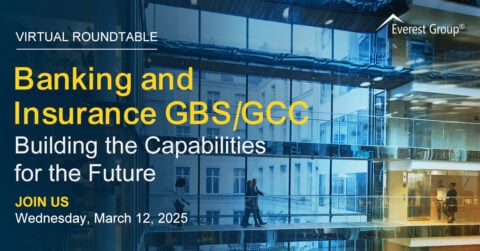Reimagine growth at Elevate – Dallas 2025. See the Agenda.
Filter
Displaying 31-40 of 309
Banking and Insurance GBS/GCC: Building the Capabilities for the Future | Virtual Roundtable
March 12, 2025
7:00 pm – 8:30 pm IST | 9:30 am – 11:00 am EST
Virtual Roundtable
1 hour 30 minutes
Thriving and Transforming: What Awaits GBS Leaders in 2025 | Webinar
On-Demand Webinar
1 hour
Outsourcing Services Cost and Pricing: The Trends to Know to Focus on the Win | Webinar
On-Demand Webinar
1 hour
From Concept to Value: Strengthening GCCs Through Innovation | In-person Roundtable
December 2, 2024
10 a.m. – 1 p.m. IST
Gurgaon, India
3 hours
GBS Architectures: New Research Shaping the Industry | LinkedIn Live
On-Demand LinkedIn Live
1 hour










